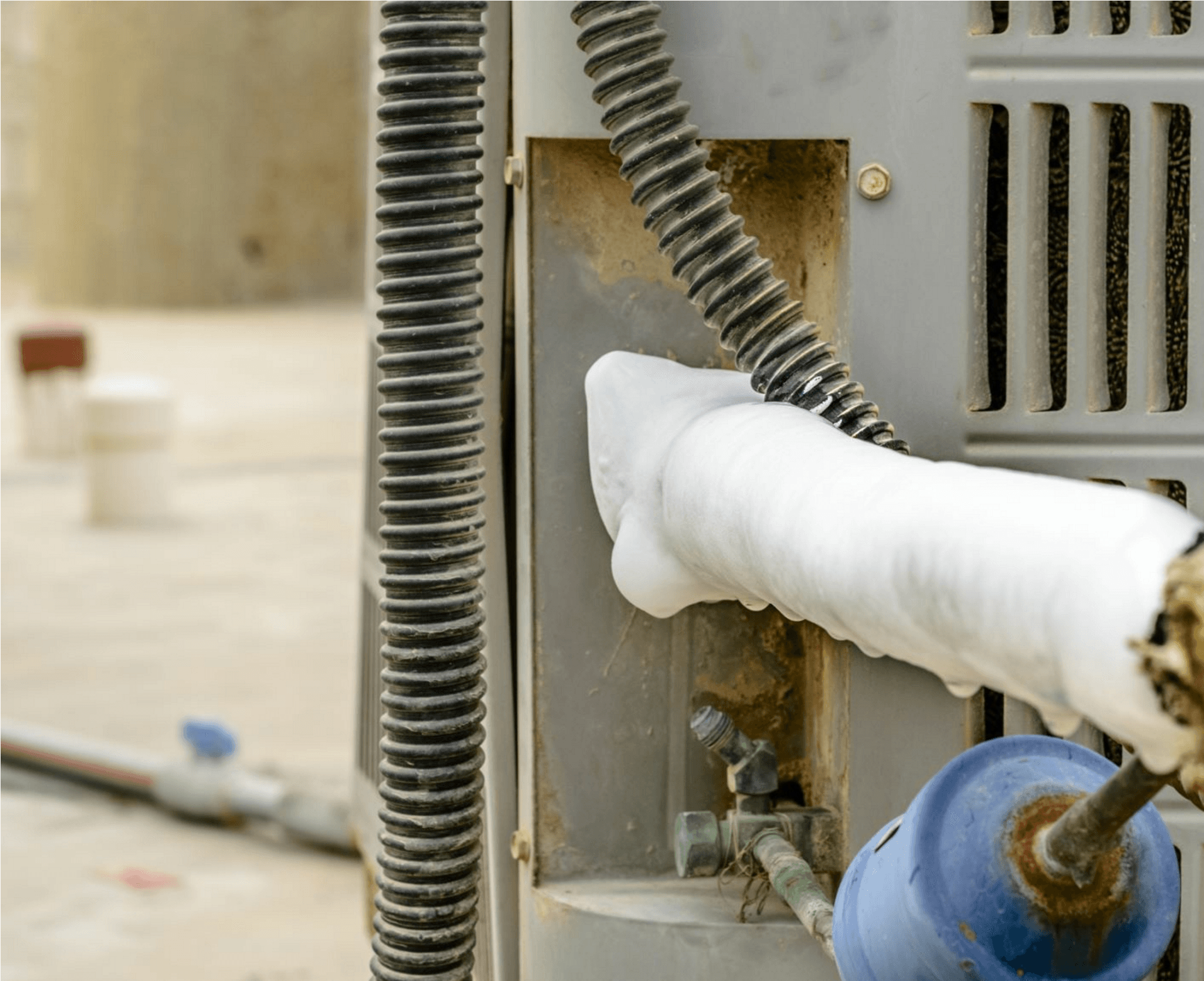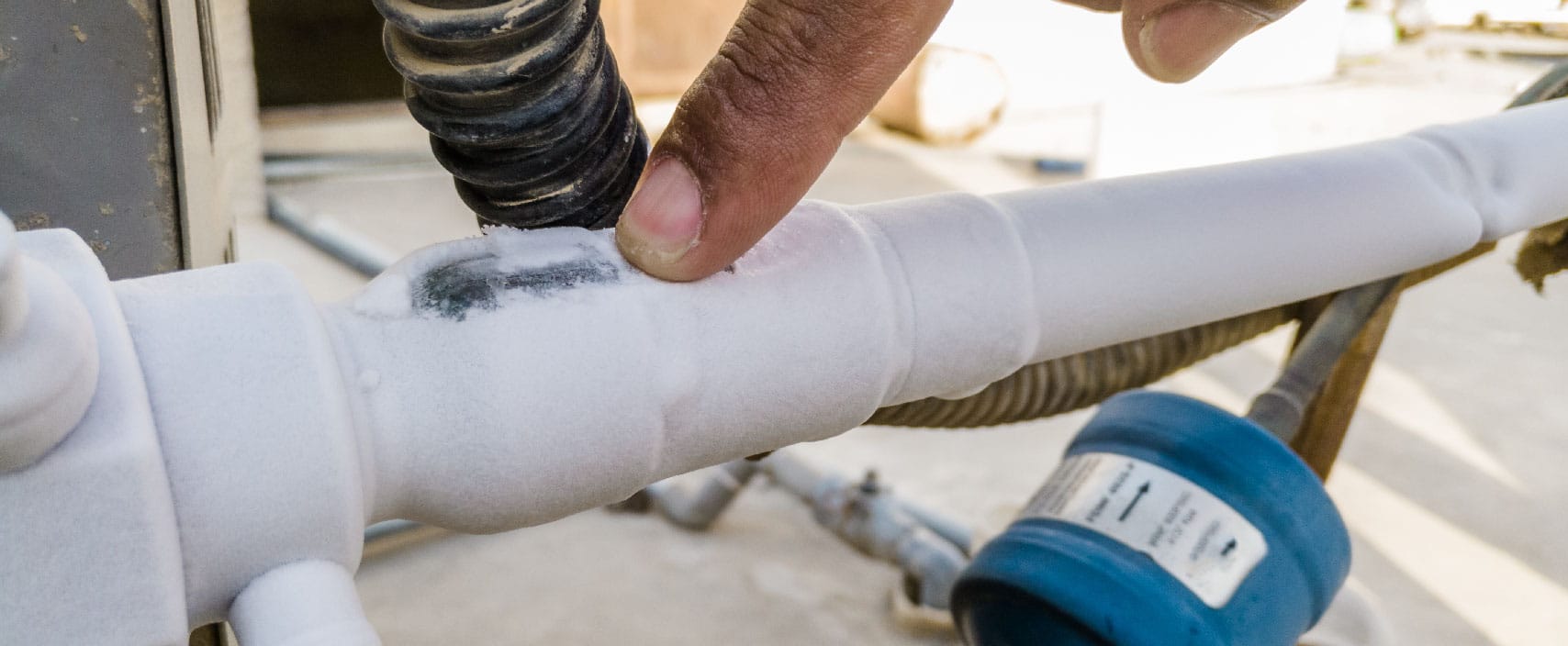Frozen AC Pipe - Causes and How to Fix the Problem
Frozen AC Pipe - Causes and How to Fix the Problem
Blog Article
Here in the next paragraph you will discover a lot of very good insights relating to How can I fix an air conditioner’s frozen pipe?.

Introduction
Finding that your a/c pipeline is iced up can be worrying, particularly throughout warm summer season when you count on your air conditioner the most. Recognizing what to do in such a scenario is critical to stop additional damage to your cooling system and guarantee your convenience inside your home.
Understanding the Causes
Numerous aspects can contribute to the freezing of an air conditioner pipe. Understanding these reasons can assist you address the problem efficiently.
Absence of Airflow
One typical cause of a frozen AC pipeline is inadequate airflow. When the air flow over the evaporator coil is limited, it can trigger the coil to go down below freezing temperature, causing ice formation on the pipe.
Reduced Refrigerant Levels
Insufficient refrigerant degrees in your AC system can also lead to an icy pipe. Low cooling agent degrees can cause the pressure in the system to drop, causing the cold of moisture on the evaporator coil.
Winter Conditions
In cooler climates, freezing temperature levels outside can add to the freezing of air conditioning pipes. If your air conditioning system is not appropriately shielded or if there are leakages in the ductwork, cool air can penetrate the system, creating the pipeline to ice up.
Dirty Air Filters
Filthy or blocked air filters can restrict airflow in your AC system, leading to numerous problems, including a frozen pipeline. It's vital to change or clean your air filters regularly to make certain appropriate airflow and protect against ice accumulation.
Signs of a Frozen Air Conditioner Pipe
Acknowledging the signs of an icy AC pipeline is essential for punctual action.
Lowered Airflow
If you discover a substantial decrease in air movement from your vents, it could suggest an icy pipe.
Ice Buildup on the Pipe
Visible ice build-up on the refrigerant line or the evaporator coil is a clear indicator of an icy AC pipe.
Odd Sounds from the Unit
Uncommon audios, such as hissing or bubbling, coming from your a/c device can signify that there's ice present on the pipe.
Immediate Actions to Take
When faced with a frozen air conditioning pipeline, it's important to act promptly to stop more damages to your air conditioning system.
Switching off the air conditioner
The very first step is to switch off your air conditioning unit to prevent the system from running and exacerbating the concern.
Looking for Blockages
Check the area around the indoor device for any kind of obstructions that may be obstructing air flow, such as furniture or curtains.
Defrosting the Pipe
You can utilize gentle methods like positioning towels soaked in cozy water around the icy pipe to aid thaw it slowly.
Safety nets
Taking preventive measures can help prevent future occurrences of an icy air conditioning pipeline.
When DIY Methods Fail
If your efforts to thaw the pipe or address various other issues are not successful, it's time to hire a specialist.
Significance of Hiring a Professional HVAC Technician
A qualified HVAC technician has the know-how and tools required to identify and fix issues with your air conditioning system securely and properly.
Normal Maintenance Checks
Schedule regular maintenance contact a specialist HVAC technician to ensure that your air conditioner system is running efficiently.
Changing Air Filters
Frequently replace or clean your air filters to prevent airflow restrictions and keep optimum efficiency.
Protecting Exposed Pipes
If your air conditioning pipes are revealed to cool temperature levels, think about insulating them to stop cold during cold weather.
Looking For Professional Help
If DIY techniques fail to solve the problem or if you're unsure concerning how to continue, it's finest to look for support from a certified HVAC service technician.
Conclusion
Taking care of a frozen a/c pipeline can be a discouraging experience, yet understanding just how to respond can assist lessen damage and bring back convenience to your home. By recognizing the causes, acknowledging the indicators, and taking punctual action, you can efficiently attend to the concern and avoid future incidents.
G UP? HOW TO FIX IT?
It happens all over America. And the rest of the world probably. It’s the hottest day ever and for some darn reason your AC isn’t cooling the house. You fiddle with the thermostat to try and fix the problem. Nada. All you can do now is go outside and check the AC unit. You make your way there and find your air conditioner unit is frozen! But how?
In this post we’ll cover how you can tell that your air conditioner has frozen (other than the obvious reasons), what could have caused the freeze, and some of the things you can do about your AC freezing up. And if you have a frozen heat pump condenser, read our blog about it to learn what to do! But remember, it is always best to avoid your AC freezing up with an AC tune up. And if you are moving into a home, it's critical to get HVAC inspection so that you are aware of an AC problems before you move in.
Keep reading and you may be able to fix the frozen AC yourself. If you can’t, call an HVAC specialist. If you live in Maryland, call SuperTech HVAC for AC repair. We’ll take care of it.
How Does An Air Conditioning Unit Work?
How you probably imagine an AC works is wrong. Contrary to popular belief, an AC system does not inject cool air into a building. Instead, it removes the heat from inside and transfers it outside. Cool huh? (Pun intended).There are 4 major components among the 3 stations of an air conditioning system: the evaporator coil, the compressor, the condenser, and the refrigerant – a special chemical that links everything together through a closed loop system.
Station 1:
Warm indoor air is sucked into the return vent, through a filter, and blows over the evaporator coil. The heat is absorbed into the cold refrigerant, turning it from liquid to gas. The air, which is now cool, is blown back into the home to areas that your thermostat, i.e. you, has decided.
Station 2:
The refrigerant makes its way outside the house to the compressor, which squeezes the warm refrigerant, raising its gaseous temperature even more.
Station 3:
When the super hot vapor refrigerant reaches the condenser, the last step, the heat is expelled and absorbed into the outdoor air. The refrigerant instantly cools, which changes it from gas back to liquid form. The cold liquid refrigerant is now ready to return to station 1 and repeat the process.
Is Your AC Freezing Up? Here Are The Signs:
As you may have guessed, your air conditioner unit freezing up on a hot day is not normal.
If this happens, there's no need to panic. Often the issue can be solved with a little troubleshooting. If the AC unit is left frozen for too long however, you may find yourself with a bigger problem.
First things first, how do you know your AC is frozen?
Well, the obvious sign is the ice on your refrigerant line-set pipe. Simply check between your outdoor AC unit and your home's exterior wall to see whether your AC line frozen.
You might also have a frozen evaporator coil. This one's not as easy to check. You'll need to open a panel on the indoor unit to inspect. Don't do this unless you're handy. If you aren't, call an HVAC pro like SuperTech HVAC or you may damage something in the process.

Hopefully you liked our topic on Air Conditioner Frozen? How To Fix your Frozen AC Line. Thank you so much for taking a few minutes to read through our article post. Sharing is caring. You won't know, you may be helping someone out. Thank-you for taking the time to read it.
Get Your Estimate Now Report this page